Microsoft Teams Integration
Introduction
Microsoft Teams is a tool for team-wide communication and messaging that integrates with a wide range of other tools in your environment, including OverOps. The integration between OverOps and Microsoft Teams is simple to set up.
When configured, Microsoft Teams integration enables you to view events detected by OverOps in the selected Microsoft Teams channel.

Event from OverOps in Microsoft Teams
The Microsoft Teams channel can display all events from your application, including the event type, name, and environment, as well as a link to the ARC screen in OverOps. Moreover, the you can also specify the filtering set (called "views" in the OverOps solution) to receive only specific types of events. The message also displays the call stack, and the server, JVM and deployment (if you named them) in which the error occurred. Click the event name to open the OverOps ARC screen, and further investigate its exact variable values.
Setting up the Microsoft Teams Integration
- Open Microsoft Teams.
- Select the channel to which the alert should be sent.
- Click the ellipses button next to the channel name.
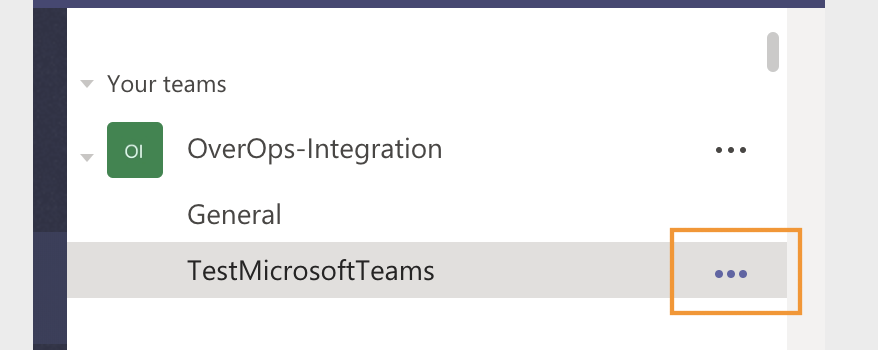
- Click Connectors.
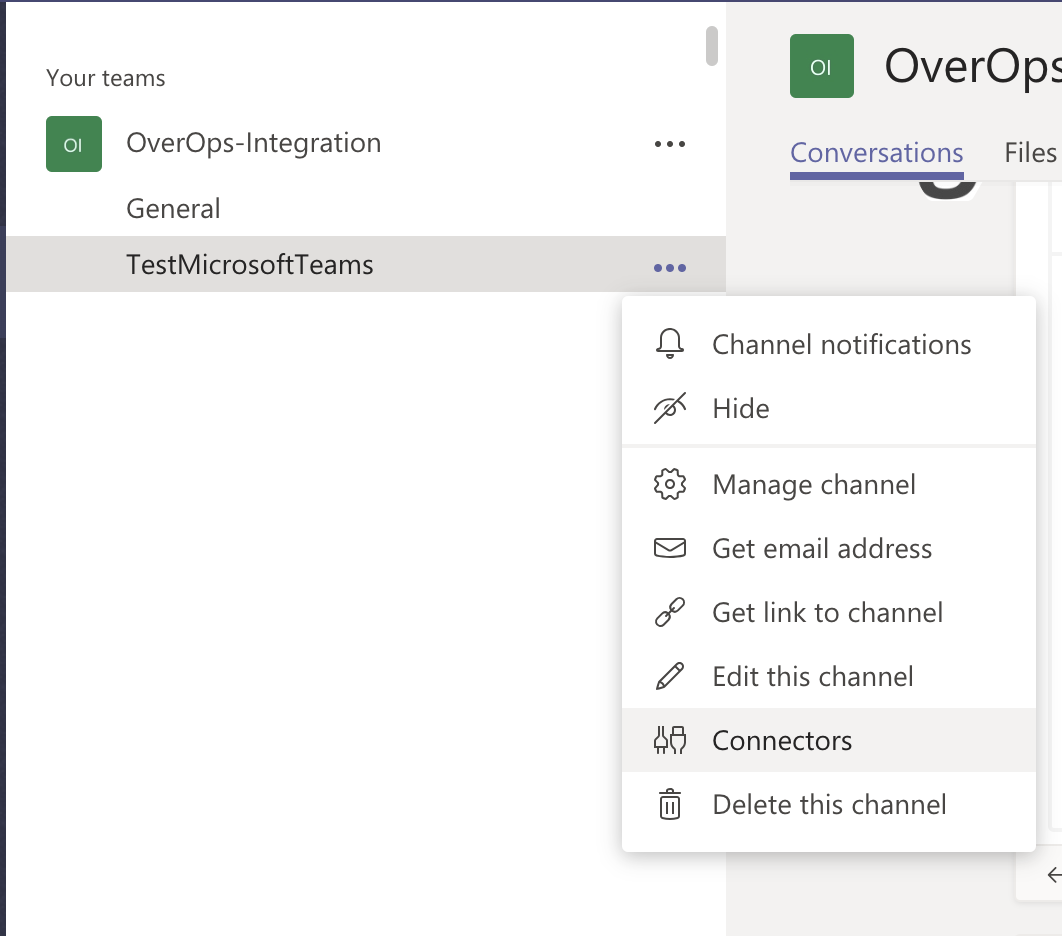
- Locate “Incoming Webhook” and click Add if it hasn't been added; otherwise click Configure.
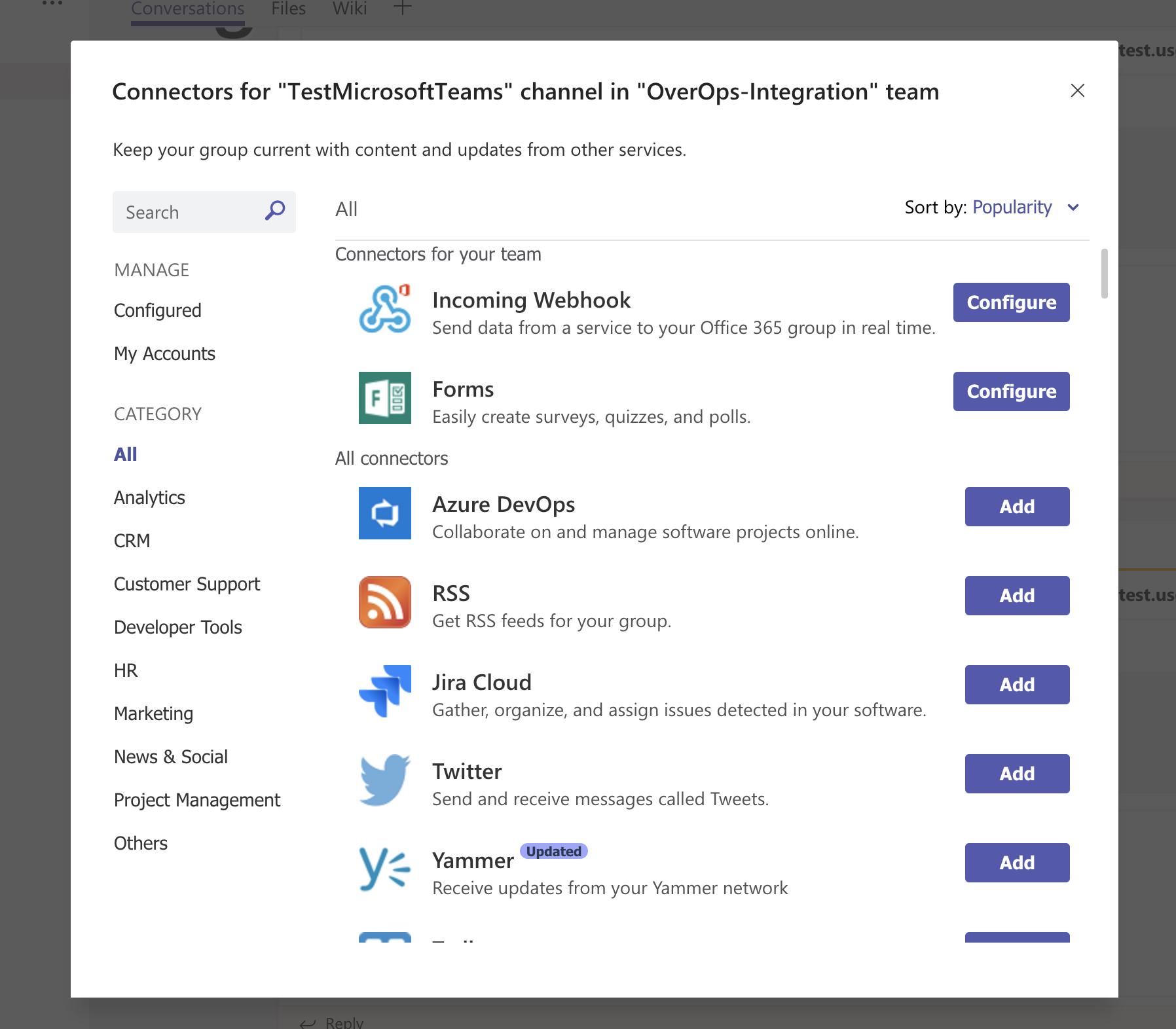
- Next, configure the appearance of each card.
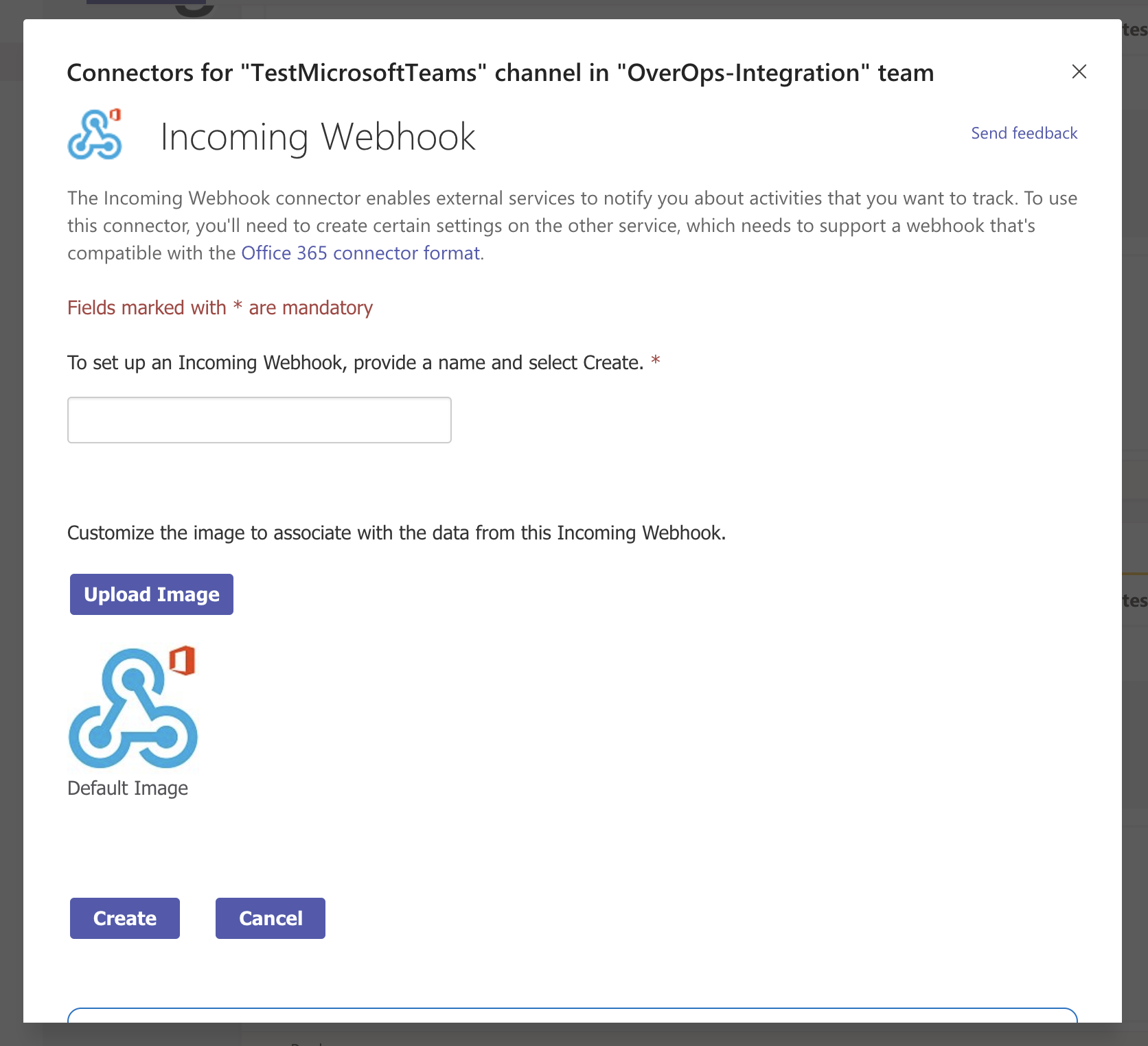
8a. Fill in the name input with “OverOps” or the name you prefer to see beside each alert.
8b. Click Upload Image and upload the image. You can download the OverOps image from here.
9. When done, click Create.
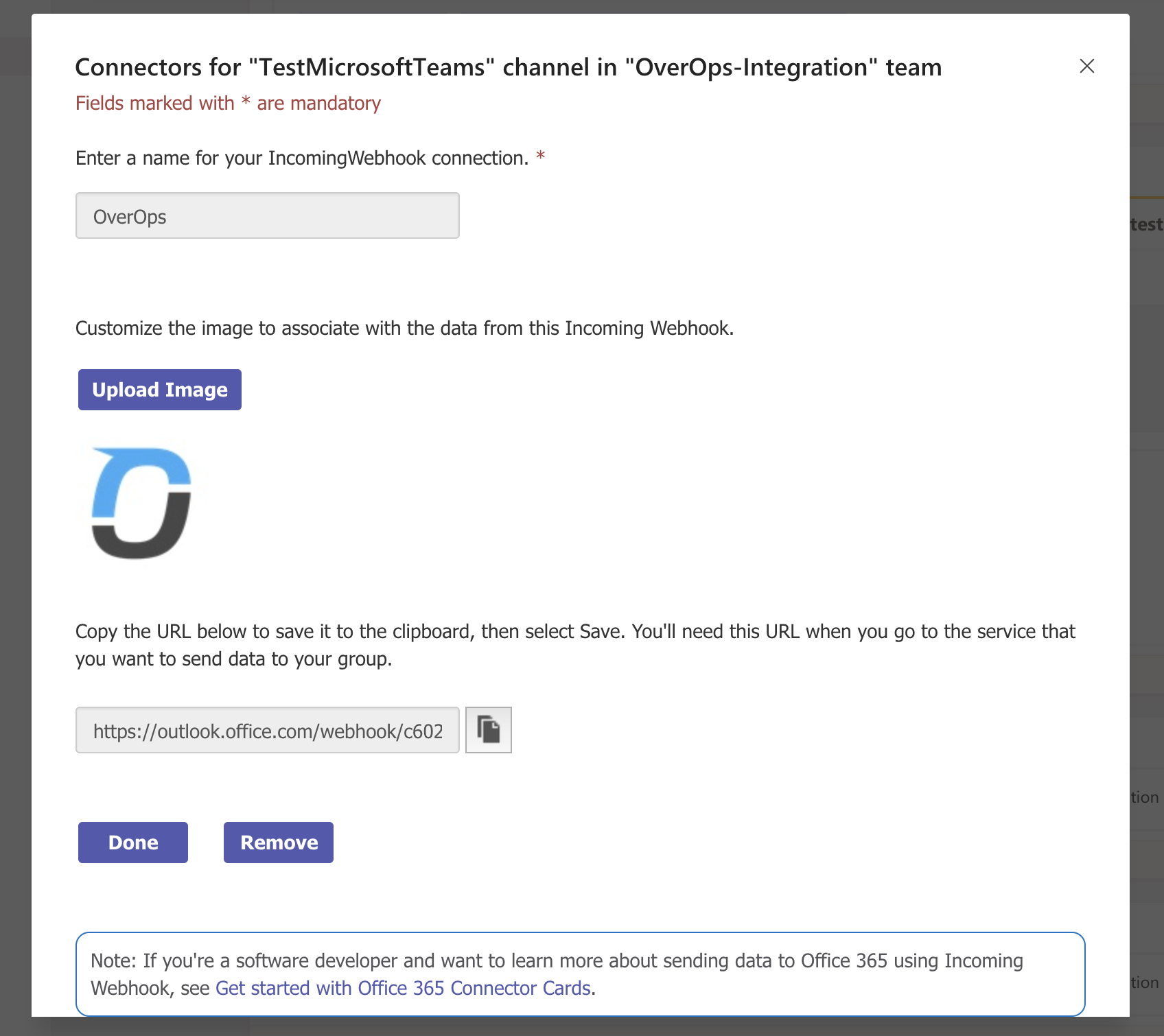
- Copy the URL that was generated. You'll need it to pass in Microsoft Teams UDFs.
Setting up Microsoft Teams in the OverOps Settings
- In the OverOps web application, click Settings in the top bar and then select Manage Environments.
- Click the Alerts button next to environment for which you wish to create an alert.

- In the Manage Alerts window, click Add Alert.
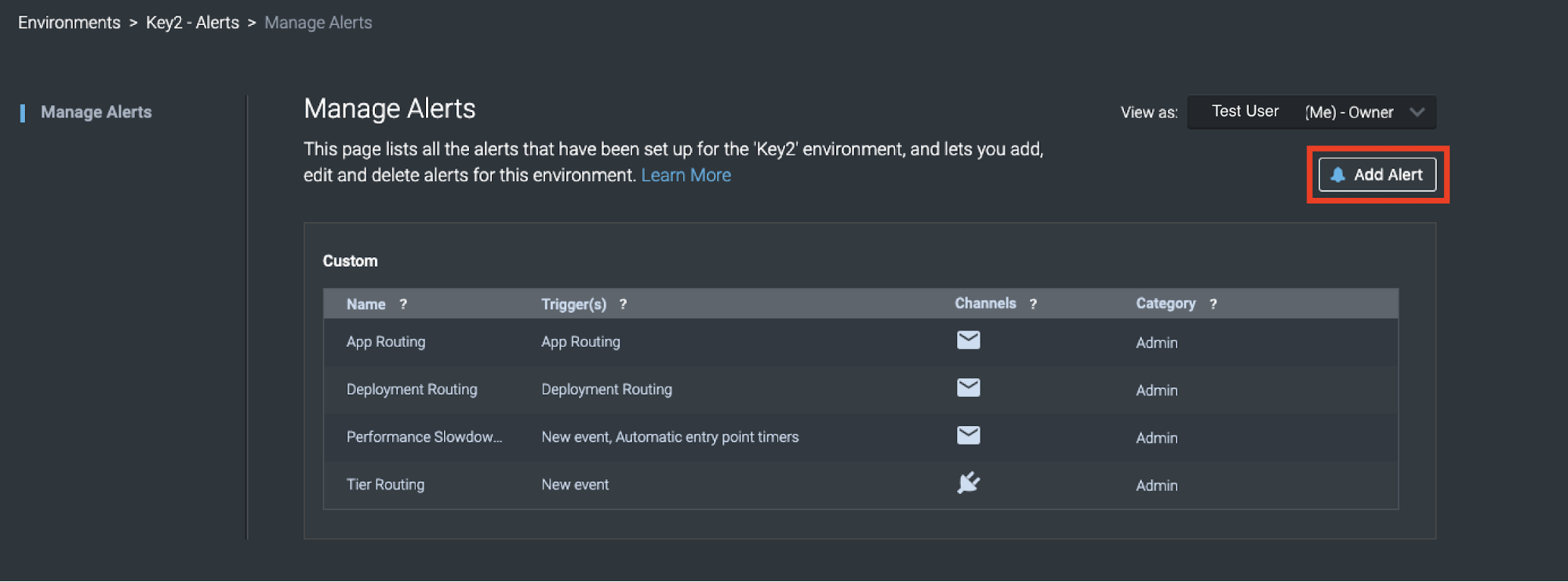
-
Set the “Type” field to “Custom”.
-
Set the “Name” field to the type or view you prefer. In this example, we've set “All Exceptions” to react to all types of exceptions.
-
Choose to Alert either on "New Events" or "Anomalies"; in this example, we've set it to "New Events".
-
Verify that only the “Custom” checkbox is selected.
-
Paste the Microsoft Teams Incoming Webhook URL in the “url” property of the “Parameters” text field.
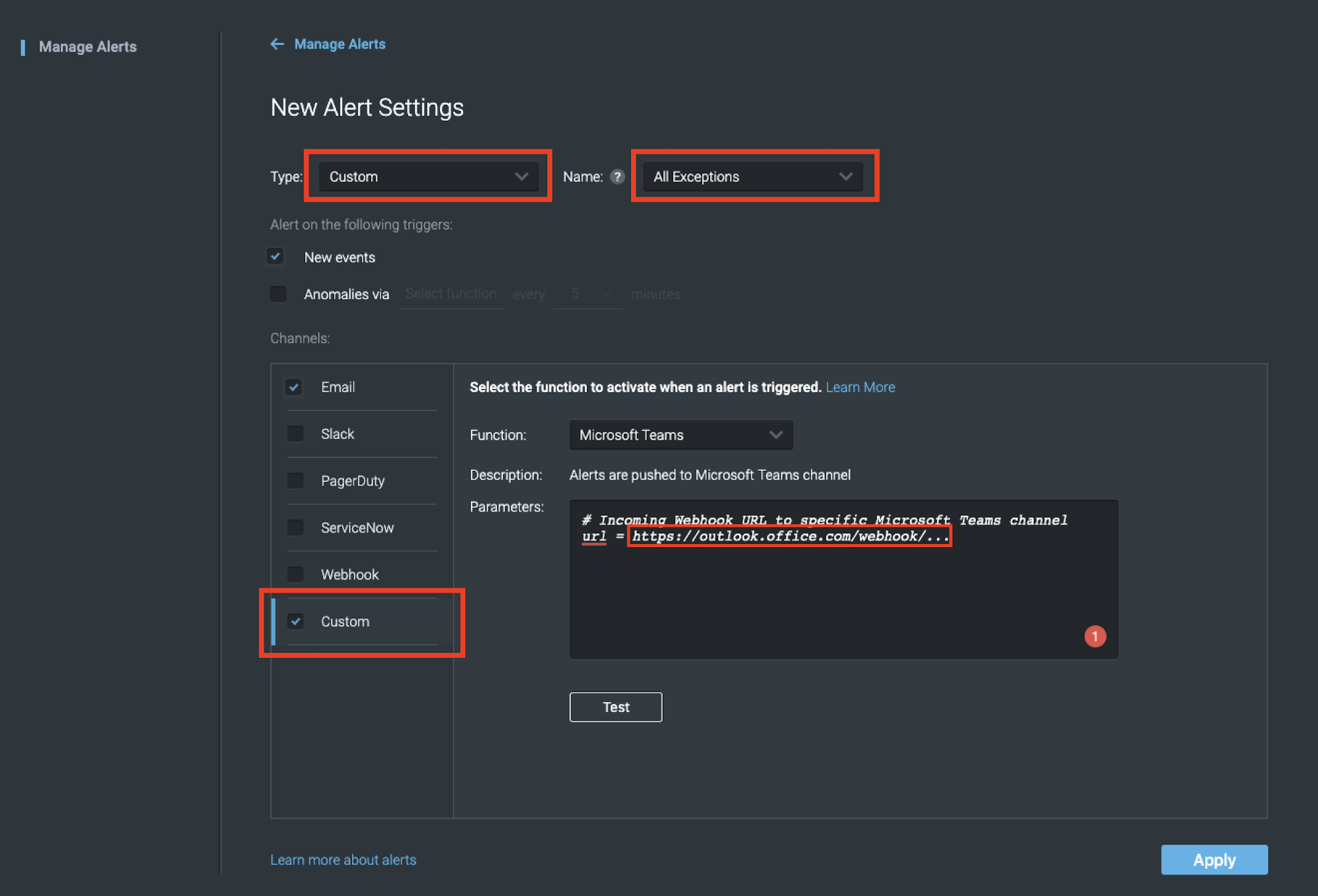
- Click Apply.
OverOps will begin sending every new event to the selected Microsoft Teams channel.
To turn off/modify Microsoft Teams integration:
- Open the Manage Alerts window from the Manage Environments window.
- Under the "Custom" table, select the row that corresponds to the alert you wish to edit/delete.
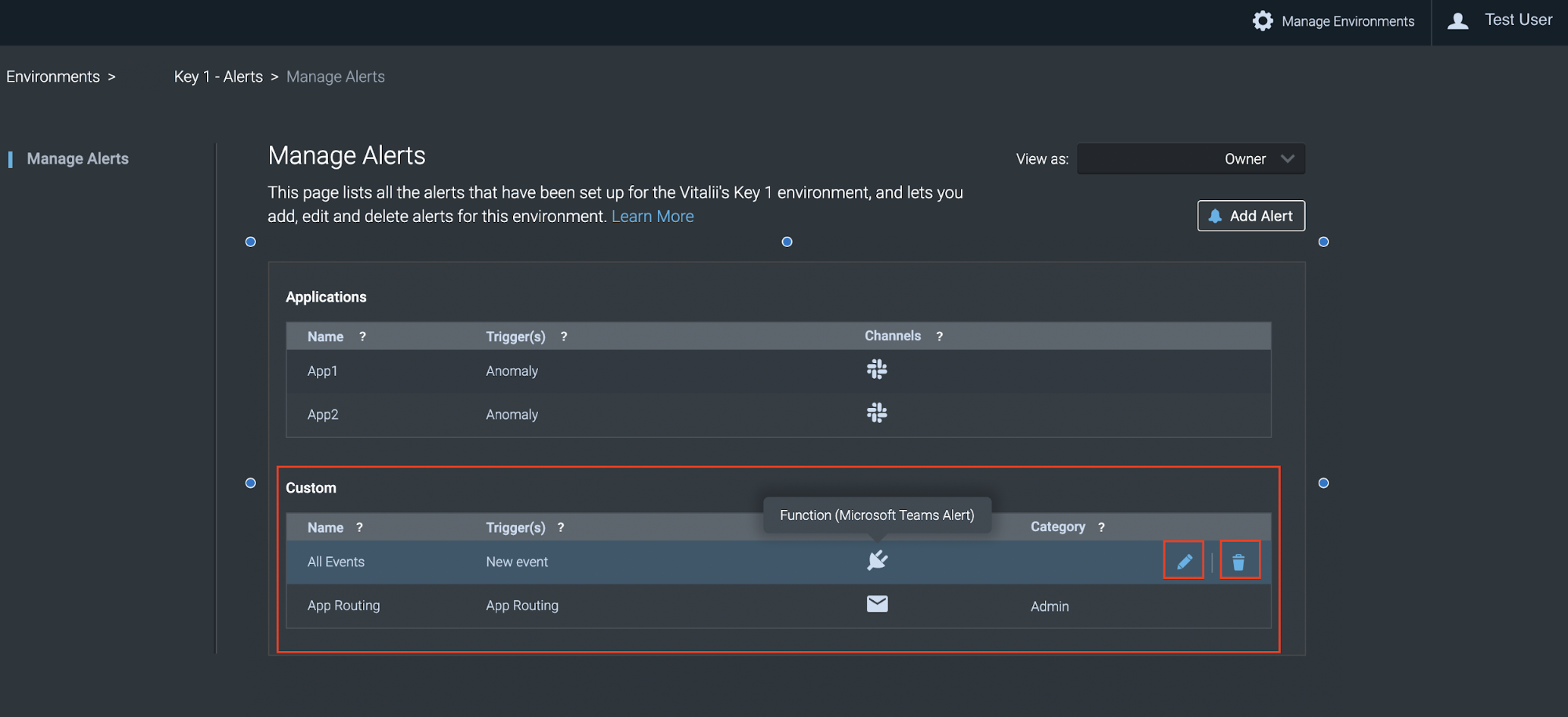
- To delete the alert, click Delete to remove all alerts on the corresponding view.
- To edit, click Edit.
4a. Select the "Custom" tab to display the alert properties:
4b. Clear the "Custom" checkbox and click Apply to disable alerts.
4c. Change "Parameters" text area and click Apply to change the alert settings.
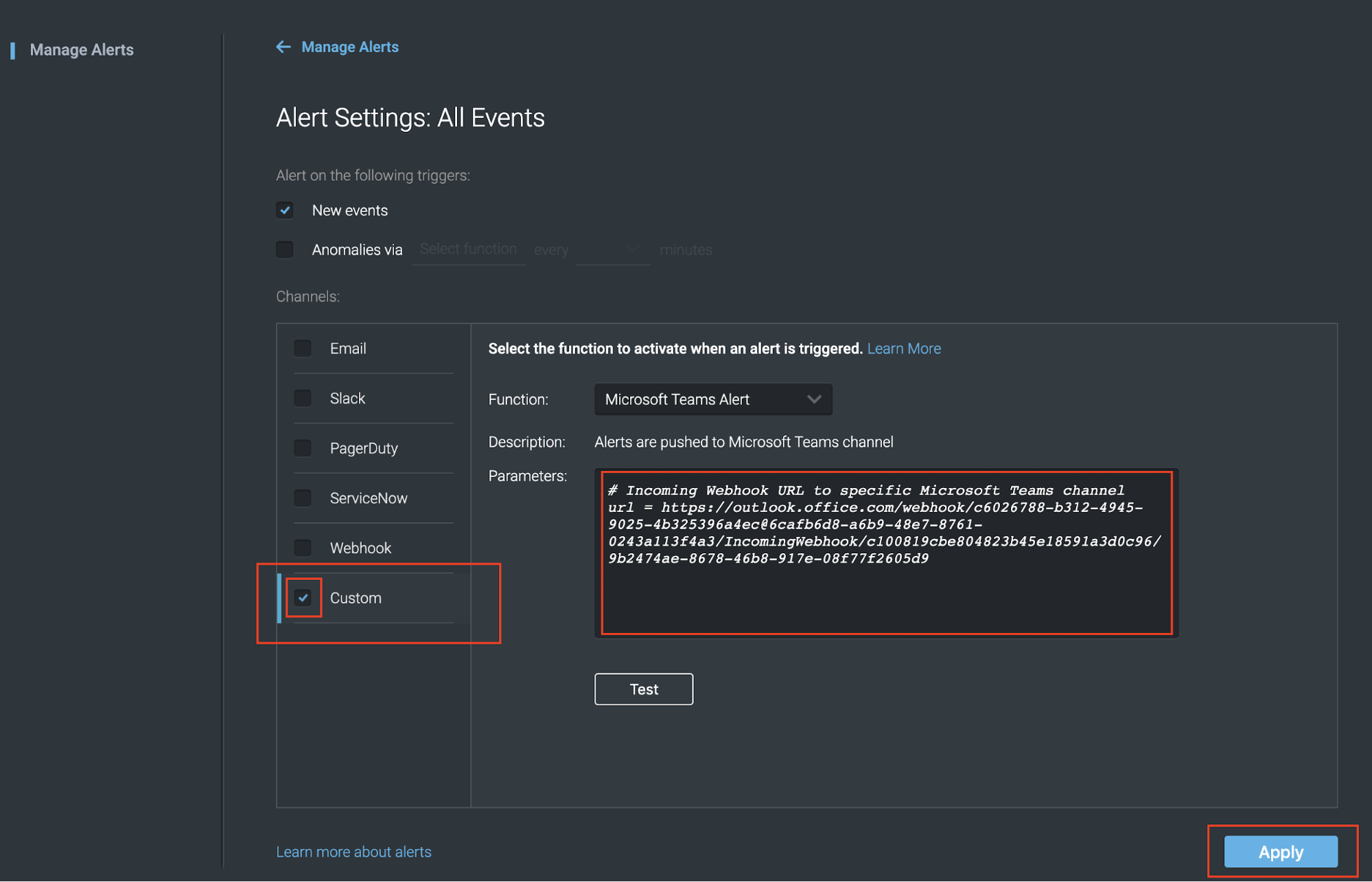
Updated 7 months ago
